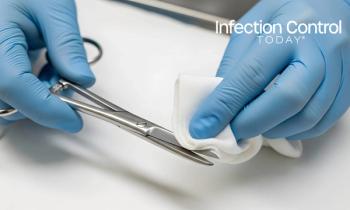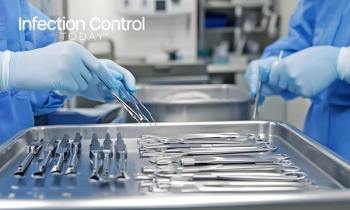
FDA: Some CPAP Device Manufacturers’ Claims Endanger Patients
Several manufacturers that are falsely marketing ozone gas or UV light-based products claiming to clean, disinfect or sanitize CPAP devices and accessories.
Devices using ozone (O3) gas or ultraviolet (UV) light to clean, disinfect, or sanitize continuous positive airway pressure (CPAP) devices, such as masks, aren’t legally meant for such application and healthcare providers and patients should be wary of such claims when made by manufacturers, the US Food and Drug Administration (FDA) said this week in a new
“The FDA has identified several manufacturers that are marketing ozone gas or UV light-based products claiming to clean, disinfect or sanitize CPAP devices and accessories in the home,” William H. Maisel, MD, MPH, director of the FDA’s Office of Product Evaluation and Quality, said in the safety communication. “Exposure to high levels of ozone gas may worsen a patients’ existing chronic respiratory diseases or increase the chance of a respiratory infection. UV light-based products could cause burns, eye damage or increase the risk of skin cancer due to overexposure. The FDA has contacted manufacturers of products making these claims and asked them to submit data demonstrating their safety and effectiveness.” The safety communication doesn’t mention which manufacturers the FDA contacted, and Infection Control Today®has asked the agency to supply those names.
The devices use ozone (O3), or “activated oxygen,” and can kill harmful bacteria, but in order to do that it needs to be used at levels considered not
“When leaks occur, ozone gas in the nearby space may temporarily rise to unsafe levels, especially if the space is not well ventilated,” says the safety communication. “Ozone gas concentrations within the CPAP machine and tubing can also remain above safe levels even after the recommended waiting periods for ozone gas products that claim to clean.”
The FDA has received complaints from patients experiencing cough, difficulty breathing, nasal irritation, headaches, asthma attacks, and other breathing complaints when ozone gas-based products were used to clean, sanitize, or disinfect CPAP devices and accessories.
In addition, O3 concentrations within the CPAP machine and tubing might remain above safe levels even after the recommended waiting periods for ozone gas products that claim to clean. “If the CPAP accessories are used without first allowing fresh air to circulate through the entire CPAP machine to remove any remaining ozone gas, this could lead to nasal, lung or any other type of irritation to the user’s breathing passages,” the FDA states.
Using UV light to clean CPAP devices can place patients at risk of eye injury, skin burns, and skin cancer if the product doesn’t shield the user from exposure. The amount of harm done would depend on wavelength, intensity, and length of exposure, although the FDA hasn’t received any patient complaints about UV exposure.
“Additionally, when UV light is used with the purpose of disinfecting CPAP machine equipment and accessories, UV light may be unable to penetrate all areas of the CPAP accessories such as the hoses, masks and connectors,” the FDA says. “This may result in inadequately disinfected CPAP devices and accessories that may not be safe for reuse.”
Newsletter
Stay prepared and protected with Infection Control Today's newsletter, delivering essential updates, best practices, and expert insights for infection preventionists.






